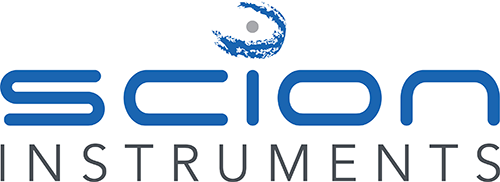Headspace Sampling Optimization
Why use Headspace Analysis?
Headspace is a versatile technique which allows for the analysis of volatile analytes in sample matrices which may be unsuitable to be directly injected into a GC or will require complicated sample preparation to make suitable. Sample preparation can be time consuming, require large volumes of expensive solvents and may introduce contamination into your sample.
Types of Headspace
Headspace can be static or dynamic and both modes are beneficial over other sample preparation techniques and will reduce system maintenance due to cleaner samples. The most suitable mode for your analysis is dependent on your application. For more information see our technical notes on “Static or Dynamic Headspace Analysis” and “Principles of Headspace”.
Headspace Liners
The liner choice can cause an effect on the signal produced during your analysis. By selecting a narrow bore liner such as SCION’s Liner 1177 78.5 L x 6.3 OD x 1.2mm ID (P/N 41312108), which can be seen below, a greater signal can be observed compared to wider bore liners.
By using a narrow bore liner, it prevents band broadening and therefore helps to produces sharp peaks
Sample Transfer Optimisation
When using headspace samplers for your analysis it is crucial to have efficient transfer of sample from vial to column and this can be affected by some key factors:
- Vial and septa
- Incubation time and temperature
- Solubility
- Split ratio
Vials and Septa
There are a few things to consider when selecting an appropriate vial and septa. At least 50% of headspace should be available in the vial to optimise the equilibration of sample to headspace. When selecting a septum, be aware of temperature limits. The septa chosen must be able to withstand the temperature the vial will be exposed to without degrading. Be aware that caps are tight with no leaks but not deformed. Be consistent with crimping and adjust your crimper to the appropriate settings.
Time and Temperature
When choosing temperatures for your headspace method there are a few crucial things to consider. The oven temperature should be set to 20 °C below the boiling point of your solvent/ sample matrix. The transfer line temperature should be hot enough to avoid the sample condensing.
Incubation time is application dependant and should be investigated during method development if not following a specific method. As samples can be pre-heated the time delay should only affect the first sample.
K is the partition coefficient of a given compound between sample (liquid) phase and the gas (headspace) phase. The lower the K value, the more the compound favours the headspace. Therefore, the target analytes should have a lower K value than that of the unwanted compounds in the sample matrix. The K value is dependent on the compound and the sample matrix and is influenced by temperature. By increasing temperature, K will decrease but this effect is not equal for all analytes and you must be aware of the boiling point of your analytes and avoid degradation.
Salting Out
By adding salt to an aqueous sample, you can induce the ‘salting-out effect’. To do this you will need to saturate your sample. Salt can help with lowering K values of some compounds which in turn increases their concentration in the headspace at equilibrium. There are limitations including already low K values may show very little change and it is application dependant.
Sodium chloride is most commonly used but other salts such as sodium hydroxide or sodium sulfate may be better suited for your sample matrix. By adding salt to your sample it could cause unwanted compounds to enter the headspace.
Injection
To help increase transfer efficiency of the sample to the GC use higher split ratios. This will result in sharper peaks. Be aware if the concentration of your target analytes in the samples are low then by increasing the split ratio too high could lead to being unable to identify the peaks.
In static headspace, a small volume of gas is added to pressurize the vial before the sample headspace is transferred to the sample loop. This pressurization is essential for consistent and reliable results. When building your method pressurization time and pressure must be optimized to get desired target analyte sensitivity and peak resolution.
